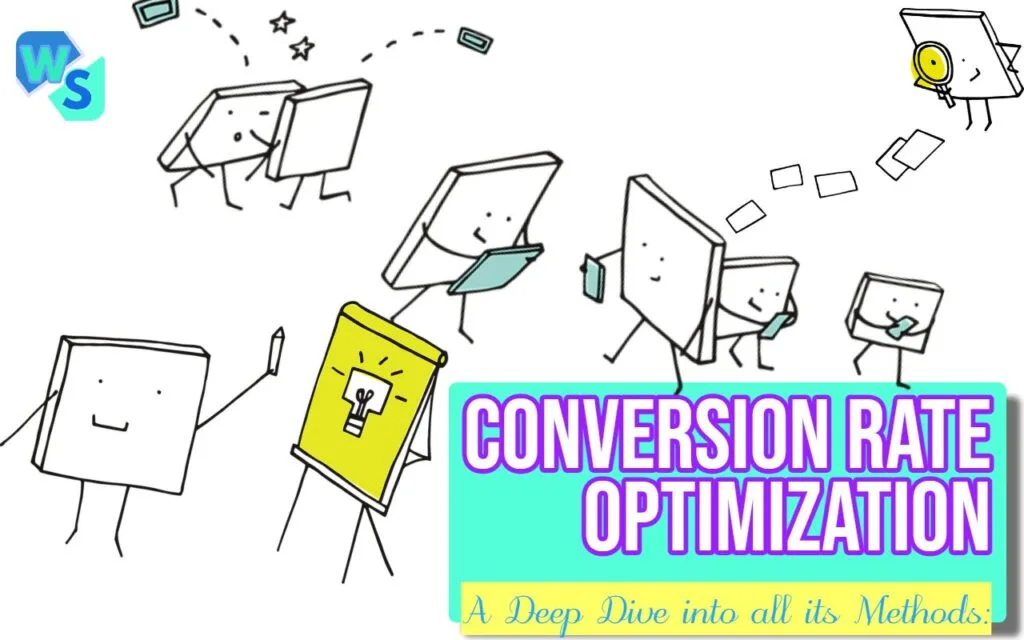Understanding Customer Retention
Understanding customer retention is crucial for building a loyal customer base. Key components include the significance of customer service and the impact of a well-structured customer service plan.
Importance of Customer Service
Customer service is the backbone of any successful business. As successful small business owners recognize instinctively, good customer service creates a significant competitive edge. For larger businesses, studying customer service reveals key components essential for maintaining customer satisfaction.
Proper customer service can significantly influence retention rates. Evidence shows that 89% of customers are more likely to make additional purchases after a positive customer service experience (Mailchimp). This highlights not only the importance of addressing customer inquiries and concerns but also understanding their needs and expectations.
| Customer Service Importance | Percentage Impact |
|---|---|
| Likelihood of Repeat Purchases | 89% |
| Increase in Customer Loyalty | Significant |
| Reduction of Competition | High |
Additionally, a seamless customer service experience should be a one-stop process for consumers whenever possible (Investopedia). By providing prompt, effective, and personable service, you can foster lasting relationships that lead to repeat business.
Impact of Customer Service Plan
A well-defined customer service plan plays a vital role in customer retention. Such a plan should focus on several key areas, including sales, brand loyalty, and generating referrals. These elements contribute to giving your business a competitive advantage in your industry.
Implementing a successful customer service strategy helps to increase revenue, as retaining existing customers generally costs less than acquiring new ones. In fact, good customer service often leads to increased sales and additional referrals, which can further expand your customer base.
| Benefits of Customer Service Plan | Impact |
|---|---|
| Increased Sales | Positive |
| Enhanced Brand Loyalty | High |
| Generation of Referrals | Frequent |
| Competitive Advantage | Strong |
Encouraging customer loyalty through rewards programs, good discounts, and excellent service can result in repeat purchases while reducing the intensity of competition. Ensuring exceptional service can transform occasional buyers into loyal customers, ultimately enhancing your customer retention methods.
By understanding and optimizing the importance of customer service and the effectiveness of a customer service plan, you can better position your business for sustainable growth and loyalty.
Value of Customer Retention
Understanding the value of customer retention is essential for any business aiming to thrive in today’s competitive marketplace. Retaining customers leads to numerous benefits that can significantly impact your bottom line.
Customer Retention Benefits
Investing in customer retention offers a multitude of advantages for your business. Here are some key benefits:
| Benefit | Description |
|---|---|
| Increased Sales | Existing customers are much more likely to make additional purchases, with likelihood rates as high as 60-70%, compared to just 5-20% for new prospects (ProsperStack). |
| Enhanced Brand Loyalty | A solid customer service plan fosters brand loyalty, encouraging repeat business and creating advocates for your brand (Investopedia). |
| Higher Profit Margins | Retaining just 5% more customers can potentially nearly double your profits (ProsperStack). |
| Reduced Marketing Costs | Focusing on retaining current customers reduces the need to excessively spend on acquiring new ones, which can be a costly endeavor. |
| Increased Referrals | Satisfied customers are likely to refer your business to others, helping to expand your customer base (Investopedia). |
Cost Comparison: Acquisition vs. Retention
Investing in customer retention strategies can be significantly more cost-effective compared to acquiring new customers. The cost of retaining a customer is generally 5 to 25 times less than the cost of acquiring one (HubSpot).
| Cost Factor | Customer Acquisition | Customer Retention |
|---|---|---|
| Cost to acquire new customer | 5-25 times more | Lower overall cost |
| Chance of purchase | 5-20% | 60-70% |
| Profit increase with retention | Potentially doubles | Steady profit margin |
Focusing on customer retention lowers your business’s marketing expenses while increasing customer lifetime value, leading to sustained growth and a significant return on investment. To enhance your customer retention approaches, consider exploring customer relationship management strategies and improving customer loyalty as additional methods to strengthen your customer base.
Strategies for Customer Retention
Understanding effective strategies for maintaining customer loyalty is essential for any business owner or marketing executive. In this section, we will discuss the importance of customer experience and how data analytics can enhance customer satisfaction.
Customer Experience and Loyalty
Customer experience plays a crucial role in customer retention. Studies indicate that customer experience drives two-thirds of customer loyalty. Exceptional customer service not only satisfies customers but also fosters brand loyalty. For instance, Apple’s direct customer service in its stores exemplifies how positive interactions can cultivate loyalty.
A comprehensive customer service plan is vital. This strategy not only aids sales but also enhances brand loyalty, generates referrals, and provides a competitive edge. The following table outlines key components of effective customer experience strategies:
| Component | Importance |
|---|---|
| Responsiveness | Timely assistance improves satisfaction. |
| Personalization | Tailored services lead to increased loyalty. |
| Feedback Mechanisms | Understanding customer needs for better service. |
| Consistency | Reliable service fosters trust. |
Implementing these components can significantly increase customer retention rates, making it essential for any business aiming to maximize customer loyalty.
Data Analytics for Customer Satisfaction
Utilizing data analytics is a powerful method for enhancing customer satisfaction. By analyzing data from customer interactions, you can gain insights into satisfaction levels and loyalty metrics. This analysis can identify areas for improvement and inform strategies to enhance customer retention.
Data analytics tools can track various customer behaviors and preferences, allowing you to segment your customer base more effectively. This segmentation enables you to tailor marketing efforts and improve interactions based on specific customer needs. For detailed methods on optimizing your marketing strategies, refer to customer base segmentation.
The following table highlights key metrics you should track for effective data analysis:
| Metric | Purpose |
|---|---|
| Customer Satisfaction Score | Evaluates overall satisfaction with services. |
| Net Promoter Score (NPS) | Measures customer loyalty and likelihood to recommend. |
| Churn Rate | Identifies the percentage of customers lost over time. |
| Retention Rate | Determines the percentage of customers retained. |
By focusing on these essential strategies—prioritizing customer experience and leveraging data analytics—you can effectively enhance your business’s customer retention methods. This approach not only creates a more loyal customer base but also contributes to long-term business success.
Effective Customer Retention Methods
To foster loyalty and keep customers engaged, implementing effective customer retention methods is paramount. Two methods that have shown significant effectiveness are personalized marketing and customer satisfaction surveys.
Personalized Marketing
Personalized marketing involves tailoring your marketing efforts to individual customers based on their interests, behaviors, and preferences. This method is crucial for enhancing customer loyalty and retention. By providing personalized experiences, you can create a connection with your customers that not only shows them they are understood but also valued. This can lead to increased loyalty and repeat purchases (Abmatic AI).
The benefits of personalized marketing include:
| Benefits | Description |
|---|---|
| Increased Customer Loyalty | Customers feel appreciated and understood, enhancing their commitment to your brand. |
| Improved Customer Satisfaction | Tailored experiences lead to content customers who are more likely to return. |
| Higher Conversion Rates | Personalized offers engage customers more effectively, increasing the likelihood of purchases. |
| Greater Customer Lifetime Value | Retained customers tend to spend more over time, contributing to increased revenue. |
| Competitive Advantage | Effective personalized marketing sets your business apart from competitors. |
Examples of successful personalized marketing campaigns include those from brands like Amazon and Netflix, known for leveraging data to deliver tailored experiences and recommendations. Moving forward, the future of personalized marketing will heavily involve advancements in artificial intelligence and machine learning, which can refine targeting and further enhance customer engagement.
Customer Satisfaction Surveys
Customer satisfaction surveys are a vital tool for gathering feedback directly from your clients regarding their experiences with your products or services. These surveys help you understand customer needs and identify areas for improvement. By actively seeking customer input, you can show that you value their opinions, which can significantly strengthen loyalty.
Surveys can cover various aspects, including:
| Survey Aspect | Description |
|---|---|
| Product Quality | Feedback on the products’ features, performance, and overall satisfaction. |
| Customer Service | Insights into the customer’s experience with your support team and service quality. |
| Overall Experience | General impressions of the brand, including interactions and satisfaction levels. |
Collecting and analyzing these responses allows you to make informed adjustments to your offerings and services, improving overall experiences and thus encouraging customer retention. Regularly integrating customer feedback into your strategy can help you stay attuned to changing preferences and enhance your customer relationship management strategies.
By combining personalized marketing with targeted customer satisfaction surveys, you can foster a loyal customer base that is actively engaged and consistently returning to your business. Exploring additional tactics for retaining your customer base can further support your retention efforts and drive long-term success.
Case Studies in Customer Retention
Analyzing case studies of companies that excel in customer retention can provide valuable insights for your business. Here are three examples of effective strategies that demonstrate how innovative approaches can enhance customer loyalty and retention.
MeUndies Referral Program
MeUndies has implemented a referral program featuring gamification elements to encourage customers to refer friends. This strategy not only rewards customers for bringing in new clients but also showcases progress throughout the buying experience. By providing incentives, such as discounts or store credit, MeUndies reduces cart abandonment and leverages social proof to enhance conversion rates. The gamification aspect makes the process engaging, motivating customers to participate actively.
| Element | Description |
|---|---|
| Incentives | Discounts, store credit for referrals |
| Features | Gamification, progress tracking |
For more on effective customer retention strategies, consider exploring customer retention methods.
Adobe Subscription Model
Adobe employs a customer retention strategy through its Creative Cloud Apps, offering a flexible subscription model. Customers can sign up for a free trial and have the option to cancel early, with the added benefit of not being billed for up to two months. This approach allows customers to experience the value of Adobe’s products without commitment, leading to higher retention rates as customers are more likely to continue using the service after experiencing its benefits.
| Element | Description |
|---|---|
| Payment flexibility | Free trial with cancellation options |
| Customer value demonstration | Up to two months without payment |
To learn more about customer relationship management, check out our article on customer relationship management strategies.
Five Below Inventory Strategy
Five Below takes a unique approach by refreshing a significant portion of its inventory every few weeks. This strategy keeps offerings compelling and encourages customers to return regularly to discover what’s new. By maintaining a dynamic selection, Five Below effectively boosts customer engagement and satisfaction. Shoppers are incentivized to revisit the store often, ensuring that they remain connected to the brand.
| Element | Description |
|---|---|
| Inventory refresh rate | Every few weeks |
| Customer incentive | New and interesting products |
This case study underscores the importance of keeping your product offerings engaging to foster customer loyalty. For further insights on expanding your market reach, explore expanding market reach.
By examining these successful case studies, you can implement similar tactics in your customer retention efforts. Whether it be a referral program, flexible subscription options, or an engaging inventory strategy, innovative approaches are key to establishing and maintaining a loyal customer base.
Customer Loyalty and Referrals
Establishing customer loyalty is pivotal for the sustained growth of your business. Two effective avenues to promote this loyalty are through reward programs and discounts and by building a strong reputation among your clientele.
Reward Programs and Discounts
Implementing reward programs or offering discounts can significantly enhance customer loyalty. By encouraging repeat purchases through incentives, you can eliminate competition as loyal customers tend to prefer your business over others. Statistics indicate that satisfied customers often buy more frequently, which directly correlates with increased sales and improved customer retention (Mailchimp).
Below is a table illustrating the impact of reward programs on customer behavior:
| Reward Program Type | Potential Impact on Customer Loyalty |
|---|---|
| Points-Based Rewards | Encourages customers to make repeat purchases to accumulate points. |
| Discount Offers | Provides immediate savings, boosting short-term sales and improving long-term loyalty. |
| Tiered Rewards | Motivates customers to reach higher spending levels for greater benefits. |
Building a Strong Reputation
Your business’s reputation can profoundly influence customer loyalty and referrals. Poor customer service can lead to negative referrals that can damage your brand, while outstanding service fosters positive word-of-mouth marketing. Good customer service not only helps retain customers but can also lead to increased revenue, as data shows that 89% of customers are more likely to make an additional purchase following a satisfying service experience (Mailchimp).
To build a strong reputation, consider the following strategies:
- Define Company Values: Clearly articulate what your business stands for and ensure these values resonate with customers.
- Showcase Brand Culture: Use social media platforms to highlight employee engagement and positive customer experiences, reinforcing your brand identity.
- Encourage Feedback: Actively seek customer feedback to refine your practices, demonstrating that you value their opinions.
Integrating effective customer relationship management strategies can help maintain a positive image and further drive customer loyalty. For more insight into enhancing your customer base, explore our resources on retaining customer base and customer base growth strategies.
Leveraging Marketing Analytics
In today’s competitive business environment, understanding how to effectively utilize marketing analytics is essential for enhancing your customer retention methods. By optimizing marketing channels and connecting those efforts to your broader business objectives, you can strengthen your customer relationships and drive retention.
Optimization of Marketing Channels
Marketing analytics plays a pivotal role in evaluating the performance of various marketing strategies. By analyzing the effectiveness of your campaigns, you can identify which channels yield the highest returns on investment for your customer retention efforts (Harvard DCE). This data-driven approach allows you to redirect resources toward channels that perform well while minimizing investment in less effective ones.
The following table illustrates potential average return on investment (ROI) for various marketing channels:
| Marketing Channel | Average ROI (%) |
|---|---|
| Email Marketing | 122% |
| Social Media Marketing | 100% |
| Content Marketing | 95% |
| Paid Advertising | 75% |
| Influencer Marketing | 50% |
By focusing on high-ROI channels, you not only retain customers but also increase their lifetime value. For more insights on acquiring new customers, refer to our article on customer acquisition tactics.
Connecting Marketing to Business Initiatives
Effective marketing analytics also helps you align your marketing efforts with your overall business strategies. By connecting marketing activities to key business objectives, such as customer acquisition, upselling, or ongoing revenue streams, you can directly demonstrate how your marketing impact contributes to customer retention strategies (Harvard DCE).
Understanding the correlation between marketing initiatives and business performance allows you to justify marketing expenditures and secure the necessary resources. It fosters a culture of data-driven decision-making within your organization, encouraging the use of analytics for continuous improvement.
Additionally, utilizing analytics can help you better understand your customer demographics and preferences, enabling you to tailor your efforts effectively. Personalized experiences significantly enhance customer loyalty; according to Salesforce, 84% of customers believe being treated as individuals is crucial for developing loyalty (Storyly). This further strengthens the importance of connecting your marketing strategies to customer-centric initiatives.
In summary, by leveraging marketing analytics, you can optimize your marketing channels and establish connections between your marketing activities and overarching business goals. This data-driven approach is vital for refining your customer retention methods and enhancing overall customer satisfaction. For advanced strategies in improving customer loyalty, consider exploring our articles on improving customer loyalty and customer base development.
The Power of Personalized Content
Personalized content plays a vital role in the effectiveness of your marketing strategies. Tailoring your marketing efforts to align with the individual preferences and behaviors of your customers can set your business apart in a competitive landscape.
Tailoring Marketing Efforts
Personalized marketing involves adjusting your marketing initiatives to meet the unique interests, behaviors, and preferences of each customer. This strategy not only enhances customer experience, but it actively demonstrates to customers that they are understood and valued. Well-executed personalized campaigns can drive customer loyalty and encourage repeat purchases. Businesses like Amazon, Netflix, Coca-Cola, Spotify, and Sephora have effectively shown how utilizing data-driven approaches to deliver personalized experiences can bolster loyalty and retention rates.
When you implement personalized marketing, consider the following factors:
| Factor | Description |
|---|---|
| Customer Insights | Utilize data from customer demographics analysis and behavior tracking to inform marketing strategies. |
| Segmentation | Create tailored messages and offers based on customer base segmentation to ensure relevance. |
| Communication Channels | Choose the right channels to deliver personalized content effectively, utilizing omnichannel marketing strategies. |
Benefits of Personalization for Retention
The impact of personalized marketing extends to significant benefits in customer retention. Current statistics reveal that approximately 60% of consumers become regular customers after experiencing personalized marketing, underscoring its importance in nurturing customer relationships.
The essential benefits of personalization include:
| Benefit | Description |
|---|---|
| Increased Engagement | Personalization creates a compelling and relevant experience, keeping customers engaged with your brand. |
| Enhanced Loyalty | Understanding customers’ needs encourages loyalty, leading to increased lifetime value and repeat purchases. |
| Improved Customer Insights | Personalized interactions provide better insights into customer behavior, allowing for targeted marketing efforts that resonate. |
In summary, harnessing the power of personalized content is crucial in the realm of customer retention methods. By customizing your marketing efforts to align closely with customer preferences, you can effectively build loyalty and enhance customer retention, ultimately driving long-term success for your business. For further strategies aimed at increasing your customer base, consider exploring customer base expansion tips and customer relationship management strategies.





















